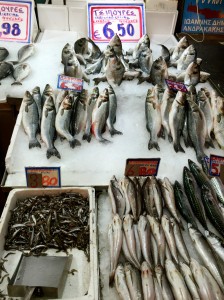Making a space feel more like home requires different actions depending on the person. For some, it involves decorations; photographs adorning walls, curtains covering windows, and flowers occupying vases on coffee tables make a space feel complete, livable. For others, it involves smells- candles, incense, or scented fabric softener embedded in couch cushions, pillowcases, and carpet fibers. For me, it’s all about the food.
My adjustment to life in college was… complicated. Most of the time, I really enjoyed being independent, but felt a tinge of loneliness not eating with my family every night with Jeopardy playing in the background. I used to hate washing the dishes after dinner, but suddenly missed doing so. Peeling shrimp, chopping celery, and making rice were no longer my duties, and couldn’t be done in my freshman year dorm room even if I wanted to. Therefore, moving into a suite with a kitchen sophomore year came with a renewed sense of freedom, and excitement at the ability to further concretize the feeling of New York City as home. No longer obligated to the food of the dining halls, “home-style” “American classics” that made me question my citizenry in a nation whose cuisine apparently consists of meatloaf, hamburgers, and chowders, I was free to recreate meals based on my identity. The only problem was that nothing I ever made tasted the way it was supposed to. I would call my mom, write down her instructions verbatim, only buy brands that I recognized from the cabinets and refrigerator back home, and even snuck some of my favorite pans, spatulas, and cutlery back to school after winter break, but something was always off. My food just wasn’t right.
I imagine many people who end up in New York, either from other places in the United States or from elsewhere in the world, often feel a similar sadness, or frustration, with the loss of an intangible aura surrounding their meals. It very well may be psychological, but if you consider eating to be as much about feeling as it is about nourishment, then migration becomes problematic when one looses a sense of home, and self, in assimilating into a new place and culture. My research this summer is on the evolution of food as social and actual practice based on a person’s location, and I’m looking at Greek, Egyptian, and Italian ethnic enclaves in New York City juxtaposed with food as culture in Athens, Cairo, and Naples.
I spent the last week in Athens observing Greek food practices- taking furious notes and eating my way through many tavernas (restaurants) and kafenios (coffee shops) of Greece’s capital city. Once I moved away from the touristy Acropolis area, I found myself in busy agoras (markets), sampling sweets in backstreet bakeries, and learning how to correctly pronounce “gyro” albeit in adulterated Greek with a heavy English accent.
One of the restaurants I went to had no menu, and the owner spoke only Greek, so I chose my food after being led to the kitchen and shown what was cooking in each pot. The fish dish, chickpea soup, and bread came with house wine, stored in wooden barrels stacked along the wall. I imagine the proprietor got his fish from the nearby market, which, along with the adjacent meat market, was teeming with life, sound, and smells despite the nation’s economic troubles. Small shops selling cheese, olives, nuts, and spices dotted the streets surrounding the main corridors of the markets. Though many brick-and-mortar grocery stores I visited were empty on a Saturday morning, a produce market was quite active with the sound of rattling metallic “grandmother carts” pulled by elderly women and vendors yelling about the high quality and low prices of their fruit and vegetables.
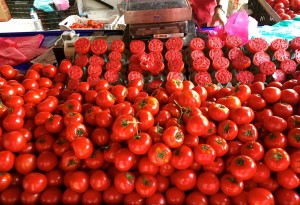
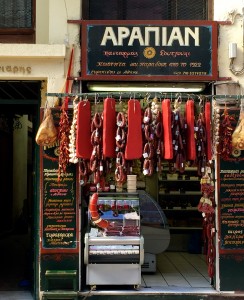
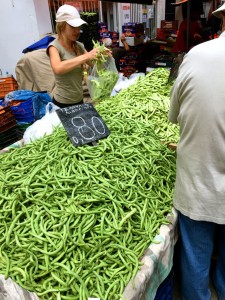
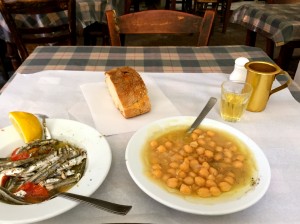
It is not hard to imagine a mother, or father, waking up in the morning and planning a large family meal for later that day. She’d make her way through the market, choosing a specific vendor’s octopus or butcher’s leg of lamb, then picking up the tomatoes, garlic, and spices she needed for the meal before going home to cook. What does this process look like in New York City? Does a trip to Gristede’s suffice? Is it more convenient to do all of one’s shopping in one location, or does the lack of connection with the butcher, baker, and ingredients in a broader sense make the meal somehow less “authentic?” I’ll have to explore these questions back in New York this fall, I suppose. I’m looking forward to updating you all on the next adventure in Cairo later this month!

